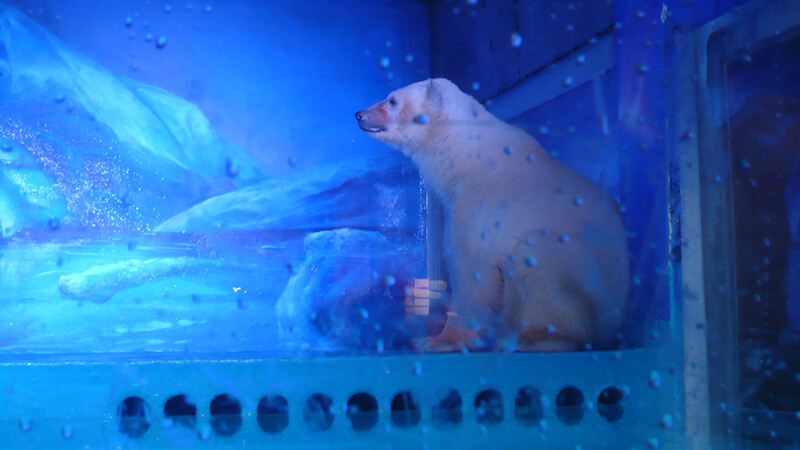International Polar Bear Day is February 27, and the idea behind it is a good one: to get people to learn more about the world’s largest land carnivore. There’s no shortage of interesting facts about this species.

Polar bears are extremely intelligent, solitary animals whose sense of smell is so sharp that they can locate a seal up to 40 miles away.
Their home ranges usually encompass several hundred square miles, and young bears have journeyed more than 600 miles from their mother’s range to establish their own. Cubs stay with their moms until they’re 2½ years old and sometimes longer.
Accomplished swimmers, they can reach a speed of 6 miles per hour—faster than an Olympic swimmer—and regularly go more than 30 miles at a time. Using their strong legs and large, webbed feet as paddles, some polar bears cover 400 miles without stopping. (Tragically, they’re being forced to do so because of melting ice caps.)
There’s one more fact to consider as the day in their honor approaches: Captivity deprives these remarkable beings of everything that’s natural and important to them.
Crammed into barren cages and glass enclosures that are a millionth the size of their natural habitats, polar bears can’t swim where they please, choose a mate, or eat what they want.
The stress and frustration of captivity often triggers stereotypic behavior such as self-mutilation and head-bobbing, and there’s growing evidence that these solitary animals become upset when humans gawk at them.
Polar bears are in serious danger of going extinct because climate change is melting Arctic ice, but breeding them in captivity does nothing for conservation. Despite this fact, SeaWorld San Diego is planning to separate one of its polar bear prisoners from her longtime companion and send her across the country to breed at the Pittsburgh Zoo. The infant mortality rate for captive polar bears is 65 percent, and should the cubs manage to survive, they’ll likely face bleak lives in captivity, just like their parents.
What You Can Do
Avoid zoos and marine parks where polar bears are held prisoner, and tell your family and friends why they should, too.
Written by Craig Shapiro





